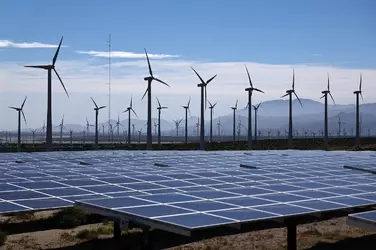
Wind turbines and solar panels blanket the landscape near Palm Springs, California. (Mario Tama/Getty Images)
 By Anusha Mathur
By Anusha MathurToday at 6:00 a.m. EDT
President Donald Trump’s plans for the future of American energy don’t include wind or solar. One argument he has trotted out lately: They’re “ugly as hell.”
Trump has said he wants to meet growing U.S. energy demands using nuclear, oil, gas and especially coal.
“I call it clean, beautiful coal,” he told Fox News’s Maria Bartiromo this week. “I don’t want windmills destroying our place. I don’t want these solar things where they go for miles and they cover up a half a mountain that are ugly as hell.”
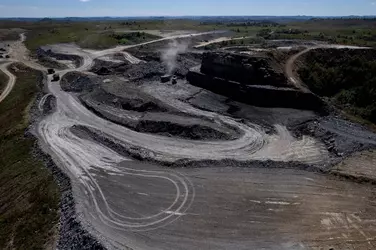
Trucks drive through a coal mine operated by Blackhawk Mining and Pine Branch Mining in Lost Creek, Kentucky. (Diane Desobeau/AFP/Getty Images)
This aesthetic objection to renewable energy is something of a long-running critique from Trump. In the past he’s called wind farms “unsightly” and “garbage,” while referring to wind turbines themselves as “big, ugly suckers” that are “rusting and rotting.” Trump’s Aberdeenshire golf club unsuccessfully sued to block a wind project off the coast of Scotland on the grounds that it would spoil the view.
To be sure, it’s not just Trump who considers renewables unsightly. Solar and wind farms have an enormous visible footprint, requiring significantly more land than nuclear, natural gas or coal to produce the same amount of energy. They also run the risk of sustaining damage from particularly fierce natural disasters like tornadoes and hurricanes.
Plenty of projects in the United States have faced opposition from people concerned they would be an eyesore, hurting property values and tourism. The federal agencies that oversee permitting are obligated to conduct visual impact assessments and consider local stakeholders’ feedback.
But Trump’s particular formulation raises the question: Which energy sources are least offensive to the eye?
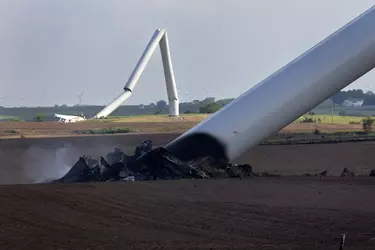
Wind turbines lie toppled in the aftermath of tornadoes near Prescott, Iowa. (Scott Olson/Getty Images)
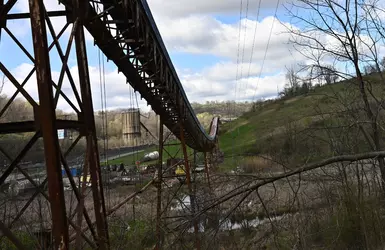
Coal travels on a belt line at the Iron Senergy mine in Kirby, Pennsylvania. (Ricky Carioti/The Washington Post)
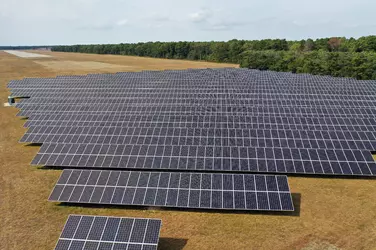
A solar array is at work at Brookhaven Calabro Airport in Shirley, New York. (Bruce Bennett/Getty Images)
What surprises some energy experts is not the president’s distain for renewables, but his argument that fossil fuels are somehow more beautiful.
“Everyone has their own view of what’s beautiful and what’s not, but I have a hard time understanding how people could think that solar panels are such a desecration of the land while mountaintop drilling or drilling for natural gas and crude oil is not,” said Severin Borenstein, faculty director of the University of California at Berkeley’s Haas School of Business Energy Institute.
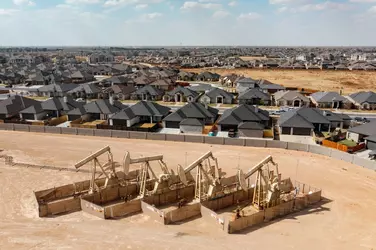
Pumpjacks sit in the middle of a residential neighborhood in Midland, Texas. (Jordan Vonderhaar/Bloomberg)
“It’s not just the coal-fired power plant that’s going to be in my local area with the big smoke stacks,” Stephen Jarvis, an assistant professor of environmental economics at the London School of Economics, said. “It’s all the upstream supply chain, thinking about the railway tracks that are bringing coal to that area, all the way to the huge mine that’s probably affecting a large part of the natural landscape as well.”
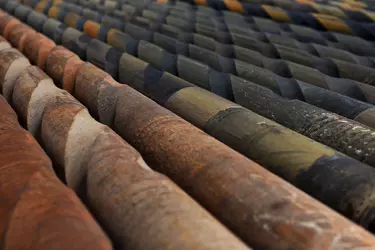
Oil drill pipe casings sit at a Colgate Energy LLC site in Reeves County, Texas. (Callaghan O'Hare/Bloomberg)

A crude oil tank farm in Midland, Texas. (Eli Hartman/Reuters)
There’s also the visual impact of fossil-fuel emissions.
“Conventional fuels have — from an aesthetic point of view — an enormous impact, not only on climate change but visibility impairment everywhere,” Martin Pasqualetti, a geography professor at Arizona State University, has written extensively about the visual impacts of renewable energy landscapes. “With the pollution that coal-burning power plants, refineries and oil put out, I think there’s no comparison.”
Experts have found that people who oppose renewables on aesthetic grounds tend not to have lived near fossil-fuel sources. And just because a community is pushing back against renewable projects doesn’t mean residents would prefer a nuclear plant, a mine or a coal-fired power station in their neighborhood.
“If you look at research on pretty much any energy technology, it’s pretty rare that people are thrilled about having this big piece of industrial infrastructure in their backyard,” Jarvis said.

The Crescent Dunes Solar Energy Project in the desert of Nevada. (Captain Wang/Shutterstock )
But from a policy perspective, the energy has to be generated somehow.
“Everything we do is going to have a visual impact; most of what we do is going to have a noise impact — although solar farms are probably the least impactful in that area, and some of the things we do are going to have a health impact,” Borenstein said. “None of this stuff is going to be entirely free from these spillovers, and we have to make a choice.”
A burgeoning field within design and architecture is devoted to making renewable energy more aesthetically pleasing.
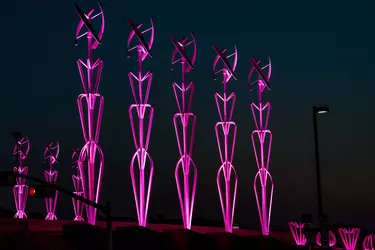
The illuminated Airway Gateway greets visitors at El Paso International Airport. (Gaby Velasquez/El Paso Times/ USA TODAY)
Some projects such as bladeless wind turbines and hummingbird-inspired blades use sleek designs to mitigate concerns about noise and visual distractions. Others, like the Oklahoma Medical Research Foundation’s DNA-shaped turbines and El Paso International Airport’s illuminated installation, also serve an artistic purpose.
Robert Sullivan, a former visual impact assessment consultant for federal agencies, said the geometric design of solar and wind technology makes it more conducive to artistic innovation than fossil-fuel sites.
“From a design sense, they have some things going for them because they’re sculptural,” Sullivan said. “A pretty large number of people actually like looking at wind turbines and solar facilities. You never really ever get people saying they like looking at strip mines or open pit mines or refineries, because if you’ve seen a refinery, you know it’s visually chaotic.”
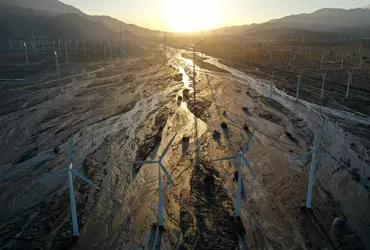
The remnants of floodwaters can be seen beneath wind turbines in Palm Springs, California, after Tropical Storm Hilary in August 2023. (Mario Tama/Getty Images)
Pasqualetti points to Palm Springs, California, as an example of a 180-degree turnaround in public perceptions about the aesthetics of renewables. The community — once fiercely opposed to wind farms — now opts for new renewable projects over other energy sources.
“In Palm Springs, there were people who were suing the local jurisdictions because the wind turbines were obstructing their view,” Pasqualetti said. “Nowadays, a generation later, they’re promoting wind turbines for tourism, people are getting married in the wind turbine fields, they have wind turbines on the logos of one of the most prestigious tennis tournaments in the country at Indian Wells.”
Pasqualetti said a shift in aesthetic perceptions of renewables is well underway in other places as well.
“The fact that you can see them at all is something to be happy about because it means they don’t have the same pollution,” Pasqualetti said. “All you have to do is get used to the fact that they’re there. And in fact it’s a reminder that what you’ve chosen is, in all other ways, the most advantageous.”
Source
